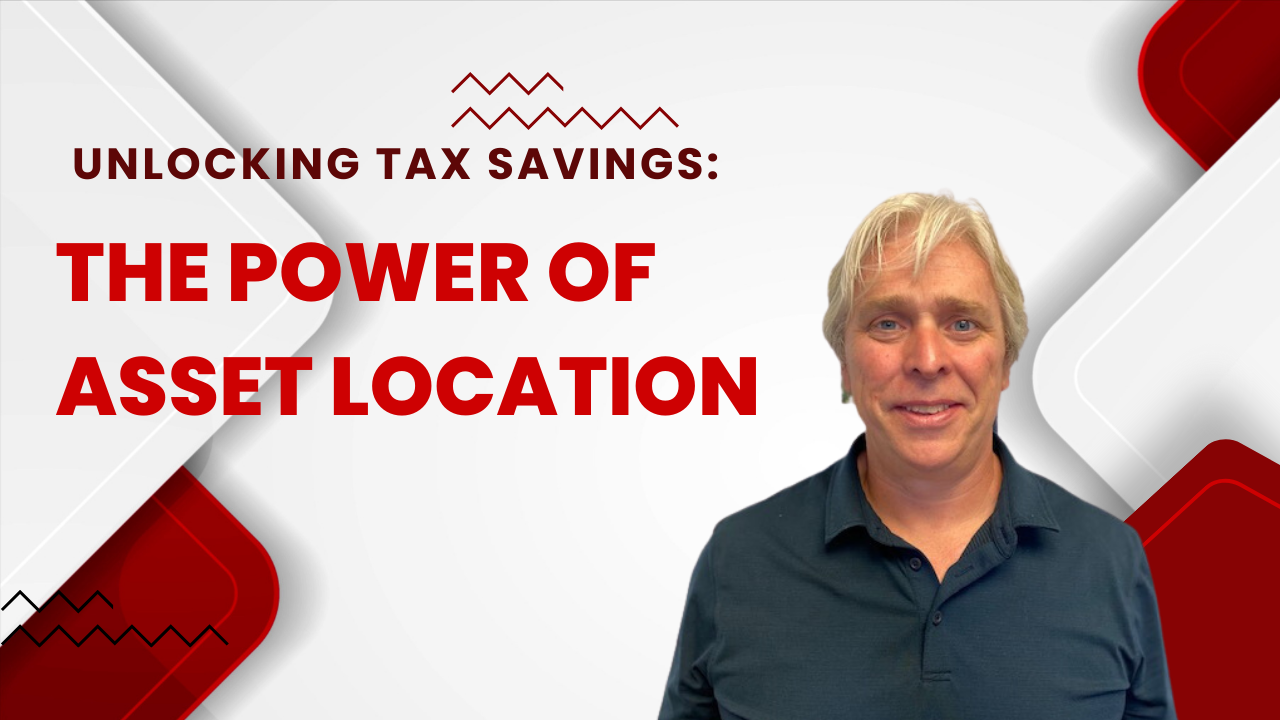Today we’re talking about the importance of asset location. Asset location is a vital component in financial planning that focuses on placing your investments in the most tax efficient accounts possible. It’s a strategy used to potentially increase your after-tax returns, helping you to preserve more of your wealth and achieve your financial goals more effectively over time. But before we get into it, my name is Warren Berger. I’m the owner of Luminary Financial Advisors located in Cocoa Beach, Florida, and serving people across the country. We help people create and implement tax efficient retirement plans. We often talk about the asset allocation in your investment portfolios, which is about determining the right mix of asset classes such as stocks, bonds, and cash to match your investment goals, your risk tolerance and your investment horizon. In contrast and less talked about is the importance of asset location, which refers to the practice of deciding which investments to hold in which accounts based on tax considerations.
Proper asset location is crucial as it can significantly impact the after tax returns of your investments. By strategically placing assets in tax advantaged or tax efficient accounts, you can minimize the tax drag on your portfolio, allowing your investments to grow more over time. Without considering asset location, you could incur higher capital gains tax, dividend tax and income tax, reducing the overall returns. For example, placing high turnover, high yield assets and taxable accounts can lead to a substantial tax burden. So let’s start by taking a look at the tax locations we have available to utilize. There are three tax buckets where your assets can live. First is the taxable bucket. These are non-retirement accounts and are subject to capital gains tax or ordinary income tax. For instance, your increase in a stocks value will be taxed as a capital gain when sold, while stock dividends and interest on bonds are taxed at ordinary income rates.
Next is your tax-deferred bucket. This would include 4 0 1 Ks, traditional IRAs, 4 0 3 Bs or four 50 sevens if you have them. You’ll have to pay ordinary income taxes when you access these funds. Third is your tax free bucket. This would include your Roth 4 0 1 K or your Roth I R A. Now, you’ll pay no taxes to access these accounts because you already paid taxes on the funds you put in. Now, let’s look at which type of assets you might want to keep in each bucket. So you see here as we go through the buckets. The first one, the taxable bucket, right? And that’s going to be your brokerage account, stock account, that’s sort of non-retirement account. You want to avoid taxable income and the realizing of capital gains, right? Because you’re going to be paying capital gains on it and you want to stay away from taxable bonds because you’re paying ordinary income on the interest from those bonds and especially high yield bonds because they tend to kick off more interest. You want to keep things like municipal bonds. Municipal bonds don’t pay federal income tax, so that’s not something that you’re worried about in that taxable account. Mutual funds, individual stocks, low turnover, stock mutual funds. That means internally in that mutual fund there’s not a lot of turnover and you have to shop around for those ETFs as well. And then you’re directly owned. Real estate like rental properties, they’re always going to live in that taxable bucket. Your pre-tax account, which is like your 401(k), that’s great for your income assets. So bonds that kick off interest that are going to be taxed at ordinary income. And then if you have income from real estate investment trusts, those are taxed at ordinary income rates. And so this allows you to avoid those rates. Now, you will pay ordinary income tax when you access those pre-tax accounts later on, but hopefully we’re being really strategic about the way we do that when we actually decide to start taking those funds out.
And then your tax-free, your Roth accounts, that’s where you want to really maximize your return. That’s where we want to see the biggest gains over time because we’re going to capitalize on having that tax-free access so that stock mutual funds and ETFs, you can have individual stocks in there as well. Low return assets like cash, CDs, bonds, these don’t need to be living in that tax-free environment. And you’ll see there’s overlap here. So there’s not necessarily one right way to do this, but this is just a general idea of where you would prefer to sort of hold those assets. Now, let’s say you have all of your nest egg in a 4 0 1 k, which is quite common, that doesn’t mean you’re going to hold only bonds in that account when it comes to investment planning. Asset allocation, trump’s asset location every time. And so that means the mix of stocks to bonds to cash that you’re establishing based on your risk tolerance.
That’s based on the time horizon when you’re going to use those funds. That’s always going to come into play first. And then once you’ve established what that asset allocation looks like, then you can look at what the best location is to hold those funds. There are a lot of moving parts when it comes to balancing your investment growth with lowering the tax drag, but if you can do this successfully, you can potentially save tens or even hundreds of thousands of dollars throughout the course of your retirement. I hope this has been helpful. If you’d like to get some help with your personal financial situation, I have a link to my personal calendar below. Or you can go to luminary financial advisors.com to set up a complimentary call with me. Whether or not we decide to work together, I’ll always make sure you get pointed in the right direction. I also have links below to some checklists and flowcharts to help you on your financial journey. And finally, check out the link to our Facebook group called 10 Years to Retirement, where we put all kinds of helpful information for people to head into retirement. Thanks for watching, and I’ll see you next time.


